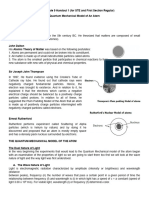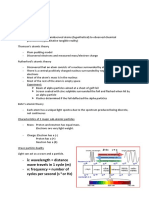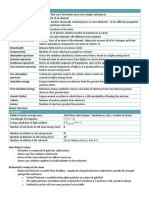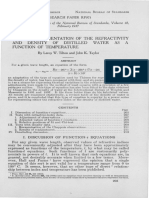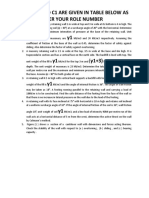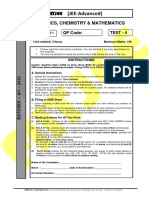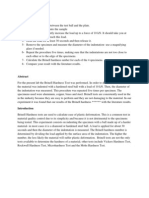0% found this document useful (0 votes)
4 views6 pagesChapter 2 - Structure of Atom (Detailed Notes)
The document outlines the discovery of subatomic particles, including electrons, protons, and neutrons, along with their charges and masses. It discusses various atomic models, such as Thomson's Plum Pudding Model and Rutherford's Gold Foil Experiment, leading to the understanding of atomic structure and the concept of atomic and mass numbers. Additionally, it covers quantum mechanics, including Bohr's model, the dual nature of light, and the quantum mechanical model of the atom with electron filling rules and electronic configurations.
Uploaded by
kishoreishore66Copyright
© © All Rights Reserved
We take content rights seriously. If you suspect this is your content, claim it here.
Available Formats
Download as PDF, TXT or read online on Scribd
0% found this document useful (0 votes)
4 views6 pagesChapter 2 - Structure of Atom (Detailed Notes)
The document outlines the discovery of subatomic particles, including electrons, protons, and neutrons, along with their charges and masses. It discusses various atomic models, such as Thomson's Plum Pudding Model and Rutherford's Gold Foil Experiment, leading to the understanding of atomic structure and the concept of atomic and mass numbers. Additionally, it covers quantum mechanics, including Bohr's model, the dual nature of light, and the quantum mechanical model of the atom with electron filling rules and electronic configurations.
Uploaded by
kishoreishore66Copyright
© © All Rights Reserved
We take content rights seriously. If you suspect this is your content, claim it here.
Available Formats
Download as PDF, TXT or read online on Scribd
/ 6




















